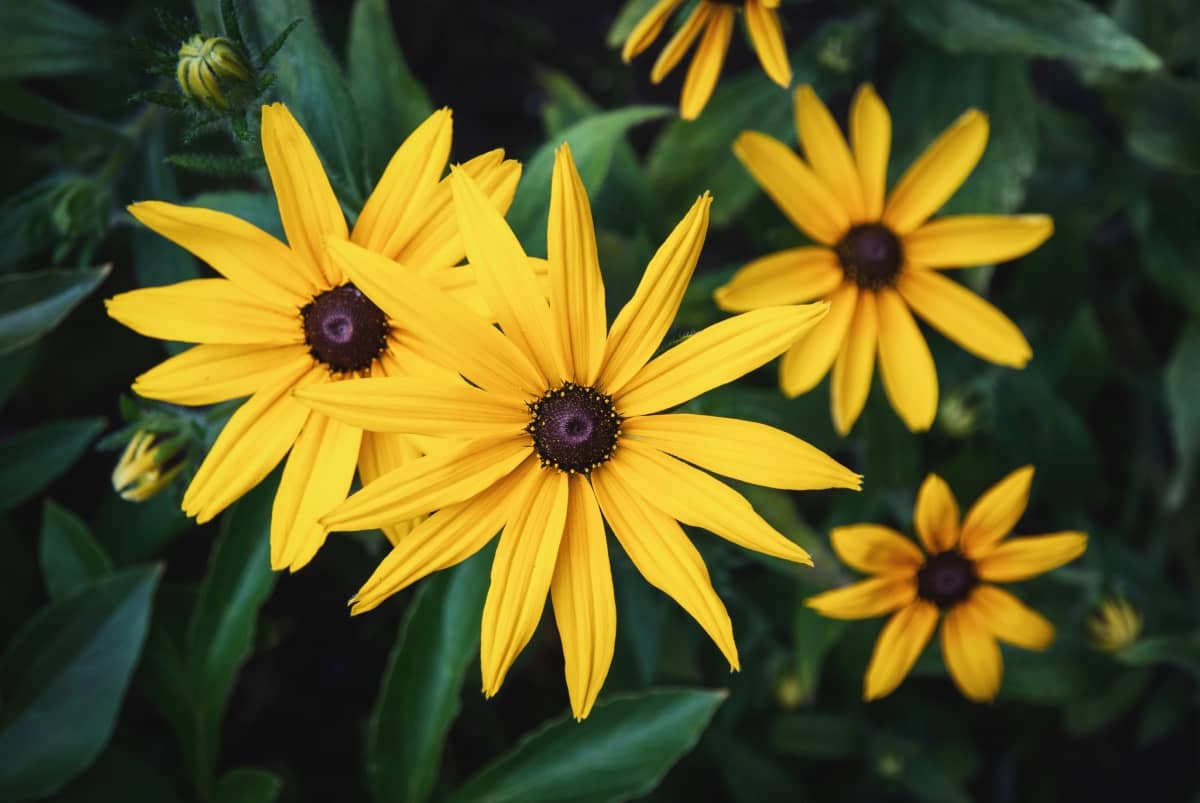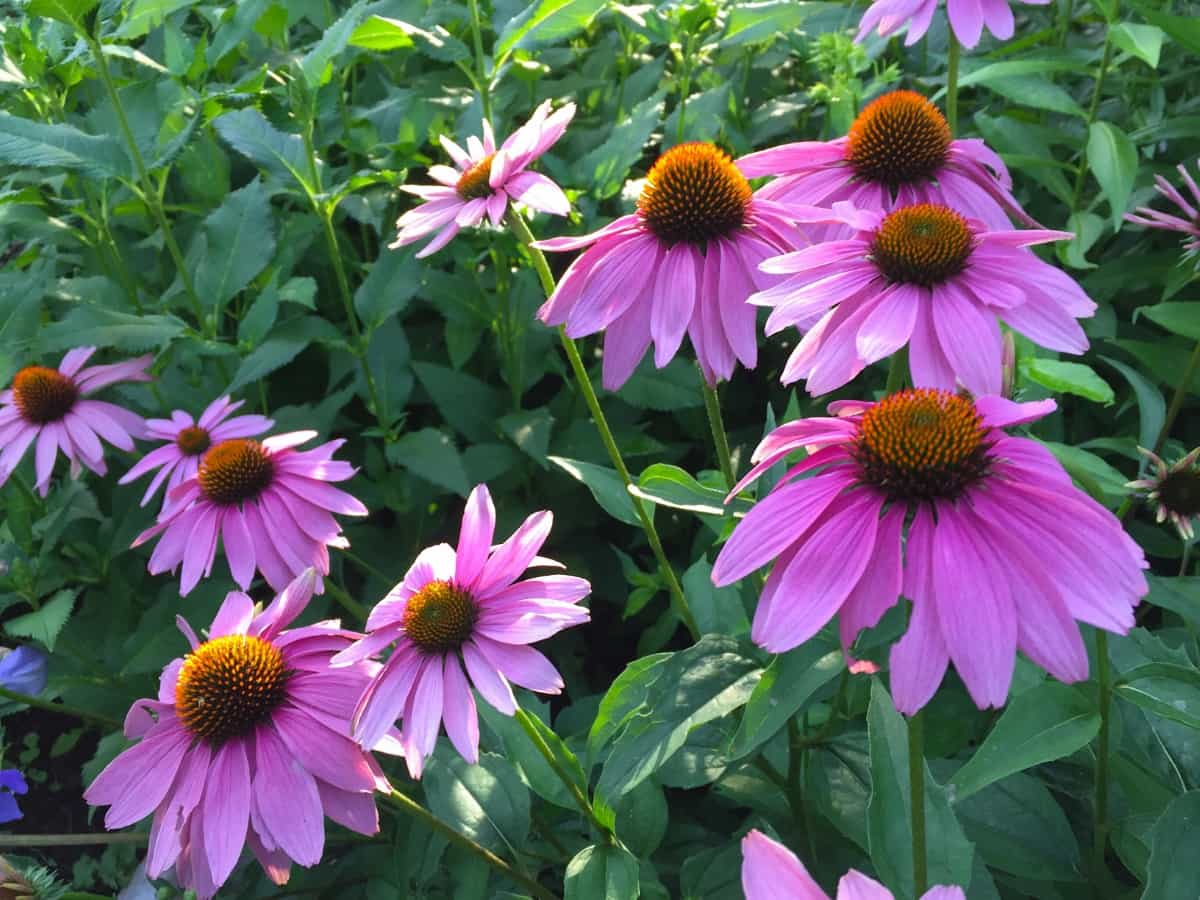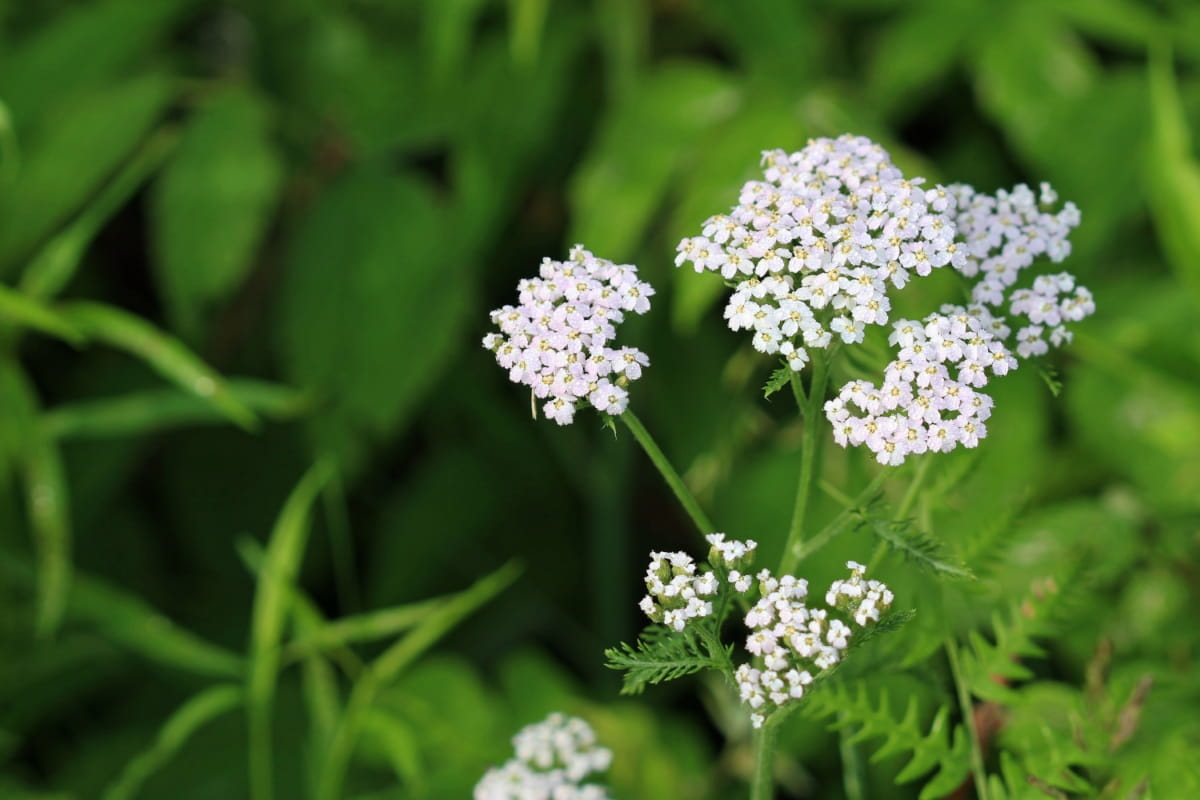Afternoon sun-loving plants are species of plants that thrive in direct sunlight. These plants are specifically adapted to the harsh conditions of the afternoon sun, which can be quite intense in some areas. Landscapers and gardeners often use them to make outdoor spaces more colorful and interesting. Afternoon sun-loving plants are a great addition to any patio or balcony also that receives direct sunlight during the hottest hours of the day. These plants adapt to the midday sun’s intense heat and light and thrive in hot and dry conditions.
Top 11 Sun-Loving Plants
Lavender
With its beautiful purple flowers and soothing scent, lavender is a popular plant. It is often grown in gardens and landscapes for its ornamental value and medicinal and culinary uses. One common question about lavender is whether it loves the afternoon sun. The answer is yes; lavender does love the afternoon sun. To thrive and bloom properly, it needs at least six hours of direct sunlight each day.
Black-Eyed Susan
North American black-eyed Susans, or Rudbeckia hirta, are perennials that grow in hard soil. It is a popular garden flower for its bright yellow petals and dark brown centers. Regarding its sun preferences, Black-eyed Susan is a sun-loving plant that thrives in full sun exposure. It is one of the few flowers that truly love the afternoon sun. Consequently, it needs at least 6 hours of direct sunlight daily, especially in the afternoon.

Russian Sage
Russian sage (Perovskia atriplicifolia) is a hardy perennial herb native to central Asia. It is known for its delicate, silver-grey foliage and its long-lasting, lavender-blue flowers that bloom from mid-summer to early fall. Russian sage is a sun-loving plant that thrives in hot and dry conditions. When it comes to sunlight, Russian sage loves the afternoon sun. Growing and blooming properly requires at least six hours of sunlight daily. A plant that receives too much shade can become leggy and fall over.
Coneflowers
Coneflowers, also known as Echinacea, are popular perennial plants known for their colorful, daisy-like flowers and medicinal properties. When it comes to their sunlight preferences, Coneflowers are generally considered to be sun-loving plants. However, the question of whether or not Coneflowers love the afternoon sun specifically is a bit more complex.
In case you missed it: How to Grow and Care for Viburnum Flowers: Planting Instructions

In general, Coneflowers prefer full sun to partial shade. This means they need at least 6 hours of direct sunlight each day to thrive. However, too much direct sunlight can harm the plant, especially during the hottest parts of the day. Excessive heat and sunlight can cause the plant to wilt, dry out, and even die.
Daylily
Daylily is a sun-loving plant that thrives in full to partial sunlight. However, it is important to note that Daylilies prefer the morning sun rather than the afternoon sun. This is because the afternoon sun tends to be hotter and more intense, which can cause the plant to become stressed and wilt. If you plan to grow Daylilies, planting them in a location that receives morning sun and afternoon shade is best. This will provide them with the ideal growing conditions and help them to thrive.
Salvia
Salvia, also known as sage, is a popular herb commonly used for cooking and medicinal purposes. Salvia prefers full sun to partial shade when it comes to sunlight but can tolerate afternoon sun as well. However, it is important to note that too much direct sunlight can cause its leaves to wilt and dry out. Overall, while Salvia can tolerate the afternoon sun, providing it with adequate care and attention is best to ensure its optimal growth and health.
Sedum
Sedum is a succulent known for its hardiness and ability to thrive in various conditions. Regarding sun exposure, Sedum is a plant that generally prefers full or partial sun throughout the day. Sedum is likely to grow well in the afternoon sun if it is not exposed to direct sunlight for extended periods. Some varieties of Sedum are specifically suited to growing in hot, sunny conditions and can even withstand drought-like conditions. These types of Sedums are often used in landscaping and gardening projects to add color and texture to outdoor spaces.
Yarrow
Yarrow, also known as Achillea millefolium, is a hardy perennial plant commonly found in North America and Europe. It is known for its feathery, fern-like foliage and clusters of small, daisy-like flowers that bloom in the summer. It prefers partial shade or full sun when it comes to sunlight. While it can tolerate some shade, it will grow best in an area that receives at least six hours of direct sunlight each day. Regarding the afternoon sun specifically, Yarrow can handle it if it is not too intense. If the sunlight is too strong, it can cause the plant to wilt or dry out.
In case you missed it: How to Identify and Treat Plant Nutrient Deficiencies

Butterfly Weed
Butterfly weed is a type of flowering plant that is native to North America. It is commonly found in fields, meadows, and prairies and is known for its bright orange flowers that attract butterflies. An afternoon sun is a great option for butterfly weed as long as the plant is also getting sufficient sunlight throughout the rest of the day. If you are considering planting butterfly weeds in your garden or yard, choosing a location that receives plenty of sunlight, especially during the afternoon, is important.
Coreopsis
Coreopsis, known as tickseed, is a hardy perennial that loves growing in full sun. It is a low-maintenance plant perfect for borders, rock gardens, and containers. While Coreopsis can tolerate some shade, it thrives in the afternoon sun, which provides the plant with the necessary warmth and light to grow healthy and vibrant. Plant Coreopsis in a location with at least six hours of direct sunlight each day if you intend to grow it.
Blanketflower
Blanketflower, also known as Gaillardia, is a hardy and low-maintenance plant native to North and South America. It is a beautiful and colorful flower commonly grown in gardens and landscapes. When it comes to sunlight, Blanketflower thrives in full sun conditions. This means it loves to grow in the afternoon sun, providing the warmth and light it needs to grow and bloom. However, blanket flowers can also tolerate some shade, especially during the hottest part of the day. If you live in a particularly hot and sunny area, you may want to provide shade for your Blanketflower plants during the midday hours.
Conclusion
Overall, afternoon sun-loving plants are a great addition to any outdoor space. With their bright colors and easy care requirements, they will surely provide a beautiful and low-maintenance accent to your landscape.
- Feed Your Flock for Less: Top 10 Tips to Save on Chicken Feed
- Ultimate Guide to Ossabaw Island Hog: Breeding, Raising, Diet, and Care
- Hatching Answers: The Top 10 Reasons Your Chickens Aren’t Laying Eggs
- Eggs and Economics: Breaking Down the Cost of Raising Backyard Chickens
- Defend Your Greens: Proven Methods to Keep Iguanas Out of Your Garden
- Ultimate Guide to Cinnamon Queen Chicken: A Comprehensive Guide for Beginners
- Ultimate Guide to California Tan Chicken: Breeding, Raising, Diet, Egg-Production and Care
- Ultimate Guide to Marsh Daisy Chicken: Breeding, Raising, Diet, and Care
- 10 Types of Chicken Farming Businesses You Can Start for Profits